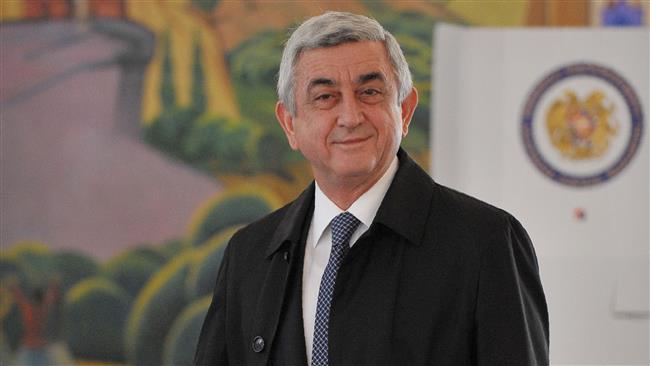
On 2 April 2017, parliamentary elections were held in Armenia. These elections are the first parliamentary elections after the 2015 referendum following which Armenia’s political system was changed from semi-presidentialism to parliamentarism. The elections were concluded by the outright victory of President Sargsyan’s Republican Party of Armenia (RPA), which won 49.17% of the votes and 58 seats out of 105 in the parliament. In addition to the RPA, “Tsarukyan” Coalition, YELQ Alliance, and Armenian Revolutionary Federation (ARF) gained 31, 9, and 7 seats, respectively, in the parliament. It will be this parliament that will be the highest legislative organ in Armenia until the next elections.
This paper will assess the 2 April 2017 parliamentary elections. To do that, first it will briefly depict the background of the elections, namely, Armenia’s path from strong presidentialism to parliamentarism, and the socio-political context within which the elections were held. These will be followed by the short description of the election process and the results. The final part of the paper will assess the results of the elections and offer some forecasts on the future of the Armenian politics.
Armenia’s Path from Strong Presidentialism to Semi-Presidential, and Eventually to Parliamentary System
The debate between the supporters of the presidential system and the parliamentary system has a long history in Armenia that dates back to as early as 1991. In the summer of 1991, a debate started between the supporters of strong presidency led by the then President Levon Ter Petrosyan and the opposition that supported a strong parliament. The proponents of the parliamentary system stressed the democratic nature of parliamentarism and authoritarian essence of the presidential system. Against these claims, proponents of strong presidency argued that the absence of a competent political class in the country coupled with the post-soviet political and economic transition of the country, nation and state building, and the Karabakh conflict rendered strong presidency a necessity. However, notwithstanding the “theoretical” arguments, competition for power rather than principles was a major concern of the parties. Eventually, by the “Law on the President of the Republic of Armenia and the Law on the Supreme Soviet of the Republic of Armenia” in 1991, strong presidential system was established in the country.[1]
The strong-presidentialism that was criticized for establishing an authoritarian system in Armenia was changed into semi-presidentialism by the constitutional amendments in 2005 to “create a balance between the legislative, executive, and judicial branches of power, to secure their independence, and to review the dominant role in regard to them of the president of the republic.”[2] However, this change did not result in an actual transformation of the authoritarian system to a democratic one.[3]
In 2015, Armenia went to a referendum for the second time to transform the semi-presidential system to parliamentarism. The proposal to replace semi-presidentialism with parliamentarism and the decision to hold a referendum for this purpose initiated heated debates in Armenia. Those who opposed the proposal argued that the proposed constitutional change was indeed a project of President’s Sargsyan, who could not run for presidency for the third term after the end of his presidency in 2018. According to the opposition, Sargsyan planned to remain in power by becoming the prime minister in the new parliamentarian system. A variant of this claim insisted that Sargsyan hoped to de facto remain in power as the leader of the RPA by pulling the strings of the party. Others pointed out the wider RPA clique and claimed that this clique wanted to hold the power in the country by establishing a parliamentarian system. Those who opposed parliamentarism often argued that parliamentarian system would result in the establishment of a party-state in Armenia.[4] Eventually, the referendum was held on 6 December 2015 and by the 63.35% of the votes and with a voter turnout of just 50.8%, Armenia was transformed to a parliamentary country.[5]
The Socio-Political Context within which the Elections were Held
The 2 April 2017 parliamentary elections were held within a context shaped by factors such as Armenia’s controversial last minute withdrawal from the Association Agreement with the EU in 2013 and it’s eventual joining to the Russia-led Eurasian Economic Union in 2015, Armenia’s unpromising economic performance,[6] its continuing conflict with Azerbaijan over Karabakh that dramatically escalated just a year ago and that is still showing signs of further escalation.[7] As to the socio-political context, popular protests in the summer of 2015 that is known as Electric Yerevan[8] and the hostage crisis that lasted two weeks in July 2016 in Yerevan should also be stressed.[9] The conclusion of a new agreement between Armenia and the EU on 27 March 2017, which is yet to be ratified, which foresees the tightening of the political ties[10] was the latest important political development.
Parties and Alliances that took part in the Elections
In the elections a total of nine parties and coalitions listed below competed:
- Armenian Communist Party
- Armenian Revolutionary Federation
- Armenian Renaissance Party (former Rule of Law Party)
- Coalition of Armenian National Congress and People’s Party of Armenia
- Free Democrats
- Ohanyan-Raffi-Oskanyan (ORO) Alliance
- Republican Party of Armenia (President Sargsyan’s party)
- “Tsarukyan” Coalition
- YELQ Alliance
Armenian Communist Party (ACP) claims to be the successor of the Communist Party of the Armenian SSR. Its members and supporters mostly consist of senior citizens. The ACP supports Armenia’s strong relations with Russia and opposes European integration.
Armenian Revolutionary Federation (ARF) that was founded in1890 in Tbilisi is primarily a traditional diaspora party. It was established in Armenia in the 1990’s. Between 1999 and 2009 the ARF was in an alliance with the ruling RPA. Likewise, ARF-RPA cooperation was re-installed in February 2016. The ARF supports Armenia’s membership in the Russia-led Eurasian Economic Union for security reasons, while supporting economic and political integration with the EU. The ARF, a self-pro-claimed socialist party, is in reality, an ultra-nationalist party.
Armenian Renaissance Party (ARP- former Rule of Law Party (RLP)) was represented in the parliament between 1999 and 2014. In 2003-2006, it formed a coalition with the RPA and the ARF, and held several ministerial posts. The RLP also joined the ruling coalition between 2012 and 2014 and held 3 ministerial posts. In 2015, the RLP merged with Unified Armenian Party and formed the Armenian Renaissance Party (ARP). ARP-RFL is mostly viewed as an opportunistic party that often maneuvers for political benefits. It is perceived as a pro-Western and conservative party. However, in different circumstances, ARP-RFL adopts different political stances.
Coalition of Armenian National Congress and People’s Party of Armenia (Coalition) was formed in January 2017. Levon Ter Petrosyan, the first president of Armenia between 1991 and 1998 is the leader of the Coalition. Among the competitors in 2017 parliamentary elections, the Coalition stands out for its relatively consistent and unique foreign policy perspective, particularly with respect to the Karabakh conflict. The Coalition perceives solution of the Krabakh conflict and the establishment of peace in the region as the pre-requisite for Armenia’s development, and advocates mutual compromises for the peaceful solution of the conflict, including Armenia’s withdrawal from the occupied territories around Nagorno-Karabakh. The Coalition adopts predominantly a pro-Western stance.
Free Democrats was founded in 2011. It formed a coalition with the Heritage Party in 2012 parliamentary elections and two of its members gained seats in the parliament. The leader of the Free Democrats is Khachatur Kokobelyan, who continued his political career in Levon Ter Petrosyan’s Pan-Armenian National Movement until 2010. The pro-Western Free Democrats oppose Armenia’s membership in the Russia-led Eurasian Economic Union.
Ohanyan-Raffi-Oskanyan (ORO) Alliance was formed in January 2017 as a coalition among three veteran politicians, namely, Vartan Oskanian (former Minister of Foreign Affairs between 1998-2008 during the presidency of Robert Kocharyan), Raffi Hovhannisyan (the first Minister of Foreign Affairs between 1991-1992; founder and leader of the Heritage Party) and Seyran Ohanyan (former Minister of Defence between 2008 and 2016). During the election campaign, ORO Alliance adopted a populist nationalist discourse. Related to that populist nationalist discourse, the ORO Alliance made declarations in support of Samvel Babayan, a former top military official of the de facto Armenian administration in Karabakh, who arrested for smuggling air defense missile to Armenia in March.[11] Also, it is worth mentioning that the Daredevils of Sassoun, the group that seized a police station in the Erebuni district in Yerevan for two weeks in July 2016,[12] announced its support to the ORO Alliance.[13]
Republican Party of Armenia has been in power since 1998. Holding the power approximately for the last twenty years, the RPA is the main architect of Armenia’s current economic, domestic and foreign policies. The RPA is a neo-conservative nationalist party.[14] It adopts the theory of Karekin Nzdeh, the father of the ideology of tseghagron (race-worshiping), the Armenian version of the 1930s’ racist/nationalist ideologies, which is based on the primacy of the Armenian race and the nationalist struggle, as its own.
“Tsarukyan” Coalition is composed of Gagik Tsarukyan’s Prosperous Armenia Party (PAP) and the “Alliance” Progressive Centrist Party “Araqelutyun” (led by Tigran Urikhanyan, former PAP member). The former is the leader of the coalition. The PAP became the second party in 2007 elections with 15.13% of the votes and had four ministerial posts. The PAP signed a coalition memorandum with the RPA and the ARF. In 2012 elections the PAP almost doubled its votes. However, Tsarukyan left politics in 2015 following a fierce dispute with President Sargsyan. Some view Tsarukyan’s return to the politics for the 2017 parliamentary elections as Sargsyan’s political game to divide the opposition. Tsarukyan, a wealthy businessman, is a prototypical oligarch-politician. The “Tsarukyan” Coalition has no definite stance or principles.
YELQ Alliance was formed among Bright Armenia Party, Civil Contract Party and Republic Party in December 2016. The leaders of the three constituent parties are known politicians, who had various roles in parliamentary and extra-parliamentary politics. YELQ Alliance represents itself as a pro-European movement and advocates Armenia-EU integration.
The Election Process
In the 2 April 2017 parliamentary elections, for the first time in Armenia, electronic devices that identify electors and other equipments were used in polling stations. For the purchase of these devices, the European Union allocated 7 million euros to Armenia.[15] However, in several stations, these electronic devices failed to function properly.[16] Ironically, it was reported that these devices did not identify the fingerprints of the current president Serzh Sargsyan and the first president Levon Ter Petrosyan.[17] Despite these epic failures, however, one of the eye-catching aspects of the 2 April 2017 elections was Armenian authorities’ efforts to obviate allegations about election frauds.
Related to the habitual claims concerning electoral frauds in Armenia, one of the interesting initiatives came from diasporan celebrities, such as Arsinée Khanjian, Serj Tankian, Atom Egoyan, and Eric Nazarian. As the organizers of “Justice within Armenia Initiative,” these diasporan celebrities started a campaign to enlist diaspora Armenians as election observers in Armenia.[18]
In general, the election process was smooth and no major incidents were recorded other than few cases of quarrels and minor fist fights. Nonetheless, there have been complaints about election irregularities. For example, the Citizen Observer Initiative, a day after the elections, reported 1243 violations in the election day and concluded that the election results do not represent the will of the voters.[19] Besides the alleged violations in the election day, the more serious and widespread complaints, particularly about vote buying and intimidation of voters by civil servants and heads of private companies, were also heard.[20] Accordingly, European External Action Service (EEAS) in its assessment of the elections stated that the elections were “well administered and fundamental freedoms were generally respected. [However] despite welcome reforms of the legal framework and the introduction of new technologies to reduce electoral irregularities, the elections were tainted by credible information about vote-buying, and pressure on civil servants and employees of private companies.” The EEAS continued that “this contributed to an overall lack of public confidence and trust in the elections.”[21] On the other hand, the CIS Observation Mission concluded that despite some difficulties because of the use of new electronical devices, the elections were “open and transparent.” The head of the CIS Observation Mission Sergey Lebedev said “Armenia surpassed even some Western countries.”[22]
The Election Results
Armenian Central Electoral Commission announced the preliminary results of the elections as follows:[23]
|
Party or Alliance |
Percentage of Percentage of the Votes |
Number of the Seats in the Parliament
|
Percentage of the Seats in the Parliament
|
|
Republican Party of Armenia |
49.19% |
58 |
55% |
|
“Tsarukyan” Coalition |
27.36% |
31 |
29.5% |
|
Yelq Alliance |
7.78 % |
9 |
8.6% |
|
Armenian Revolutionary Federation |
6.58% |
7 |
6.7% |
|
Armenian Renaissance |
|
- |
- |
|
ORO Alliance
|
2.07% |
- |
- |
|
Congress-People’s Party
|
1.66 % |
- |
- |
|
Free Democrats Party |
0.94 |
- |
- |
|
Communist Party of Armenia |
0.75% |
- |
- |
|
|
Total: 105 |
|
|
Table 1) Percentage of the votes, number of the seats in the parliament, percentage of the seats in the parliament of the parties and alliances that took part in 2017 Parliamentary Elections.[24]
As Table 1 demonstrates, the RPA gained almost the half of the votes and became the downright victor of the parliamentary elections. The RPA gained the absolute majority of the parliament with 55% of the seats. This enables the RPA to form the new government without the support of other parties. “Tsarukyan” Alliance, Yelq Alliance, and Armenian Revolutionary Federation are the other three parties that gained the right to be represented in the parliament with 31, 9 and 7 seats, respectively. The other five parties and alliances failed to pass the 5% (for the single parties) and 7 % (for the alliances) threshold, hence lost the chance to be represented in the parliament.
Besides these, an important result of the elections is the low vote turnout, which was recorded as 60.86%.
Assessment of the 2 April 2017 Parliamentary Elections in Armenia and Forecasts on the Future of the Armenian Politics.
1) Absolute Victory of the RPA and the Continuation of the RPA
Despite the complaints about the illegitimacy of the elections and the results,[25] the fact is that RPA gained almost half of the votes, leaving the second competitor, namely, “Tsarukyan” Coalition, behind by almost 20 points. This reveals that, despite the probable frauds, RPA gained a very significant support of the Armenian voters and its electoral victory is beyond doubt.
This straightforward electoral victory will provide legitimacy to the future political decisions of the RPA. This legitimacy would also provide an advantage to President Sargsyan if he decides to remain in politics, possibly as the prime minister in the newly established parliamentary system after the end of his term in the presidential office.
2) Continuity in the Political Sphere in Armenia
Since 1998, Armenia has been ruled by the Republican Party of Armenia. Moreover, as tables in Appendix 2 and Appendix 3 clearly shows, rather than expected erosion, the RPA’s hegemony in the Armenian society consolidates in years. The RPA rule in Armenia will remain unchanged at least until the next parliamentary elections. All in all, despite the systemic transformation in the country, the rule of the Republican Party of Armenia remains unchallenged.
On the other hand, it should not be overlooked that the systemic change from semi-presidentialism to parliamentary system may bring new dynamics into the Armenian politics. As to that, whether Sargsyan will remain in the politics after the end of his presidential term in 2018, when the parliamentary system will be effectuated, and with what role, will become an important factor in Armenian politics. As regards to the possibility of new dynamics, the appointment of Karen Karapetyan as the Prime Minister in September 2016 as the successor of Hovik Abrahamyan, who was viewed as the second-man in the party after Sargsyan, and Vigen Sargsyan’s appointment as the Minister of Defense in October 2016, as well as Hovik Abrahamyan’s announcement about leaving the RPA, but not the politics, on 24 January 2017[26] should also be taken into consideration. These may be the signs of a renewal of the RPA cadres, which might have consequences in the new parliamentary system.
3) Radical Diaspora Element in Armenian Politics
The above mentioned “Justice within Armenia Initiative” is an example of the recently growing diaspora activism related to domestic issues of Armenia. Such activism might have positive outcomes if it could bring fresh perspectives to the Armenian society on different matters. However, considering the discourses and the practices of the above mentioned celebrities and others, who to a great extent reproduce the variants of the old discourses and the practices, it could be seen that such possibility is still yet to be matured.
As to Diaspora-Armenia connections, another thing that should be addressed is reports that were published in the Armenian media about negotiations between the wining RPA and the ARF on possible post-elections cooperation.[27] What is critical about these reports is that, as said above, the RPA won the absolute majority of the seats in the parliament and does not need the support of any other party to form the government. Yet, reports reveal that the RPA, at the least, does not rule out cooperation with the RFA. Furthermore, the RPA does not negotiate with other parties or alliances, but with the ARF.
The cooperation between the RPA and the ARF began after the 1998 presidential elections at which Robert Kocharyan became the second president of Armenia. This cooperation has continued until today, despite intervals. The above mentioned reports demonstrate that this cooperation remains and is likely to remain in the future.
One of the reasons of this cooperation is RPA’s long lasting perspective of consolidating relations with the diaspora to secure diaspora’s support in various matters. Therefore, being the well-organized, consolidated, and active diaspora organization, the ARF fits well with RPA’s objectives. On the other hand, given that the ARF lacks the sufficient support of the society to gain the political power, cooperating with the RPA is the only way to have significant influence on decision making processes in Armenia. In addition to these, both parties adopt the same or very similar nationalist ideology. In brief, both the practical considerations and ideological similarities facilitate the RPA-ARF cooperation.
What is important about this cooperation is its results, namely, the consolidation of the radical diaspora element in Armenian politics. This radical element is an impediment for the formation of constructive political perspective to take root in Armenia, particularly with respect to the relations with the neighboring countries and the solution of the Karabakh problem.
4) The Continuing Hold of Oligarch-Politicians in Armenian Politics
Clientelism, clan politics and oligarch-politicians have been one of the characteristics of the Armenian politics since independence in 1991. The emergence of the “Tsarukyan” Coalition as the second party by gaining 27.36% of the votes demonstrates that these still continue to be a significant element in Armenian politics. Alas, this is not a promising reality for the consolidation of democracy and progress in Armenia.
5) The Weakness of the Opposition in Armenia
The electoral victory of the RPA, which has been in power for twenty years, is also a revelation of the weakness of the opposition in Armenia. As to this, it is important to note that neither the coalitions led by veteran politicians, such as the Coalition of Armenian National Congress and People’s Party of Armenia and the ORO Alliance nor the rather fresh political establishments could make themselves felt, with the exception of the YELQ Alliance.
Currently, there is no political power in Armenia that is strong enough to challenge the existing political powers and the political system, in general.
6) Low Voter Turnout
One of the most important results of the recent elections is the very low voter turnout (60.86%).
|
Election For |
Date |
Voter Turnout |
|
Armenian National Assembly |
02.04.2017 |
60.84% |
|
Referendum
|
06.12.2015 |
50.5% |
|
President |
18.02.2013 |
60.62% |
|
Armenian National Assembly |
06.05.2012 |
62.34% |
|
President |
19.02.2008 |
72.14% |
|
Armenian National Assembly |
12.05.2007 |
59.35% |
|
Referendum |
27.11.2005 |
65.34% |
|
Referendum |
25.05.2003 |
52.1% |
|
Armenian National Assembly |
25.05.2003 |
51.05% |
|
President |
05.03.2003 |
67.04% |
|
President |
19.02.2003 |
63.21% |
|
Armenian National Assembly |
30.05.1999 |
51.72% |
|
President |
30.03.1998 |
68.35% |
|
President |
16.03.1998 |
63.29% |
|
|
Average: 60.56% |
|
Table 2) Voter turnouts in Armenian elections in years (Source: http://www.electionguide.org/countries/id/12/).
As the Table 2 above demonstrates, low voter turnout is a pattern in Armenia and the recent elections are not an exception in this regard. This reveals that the Armenian society has not only low trust for the political forces in the country, but also for the entire political system, in general. Related to that, it is also possible to say that Armenian society’s hope, and maybe wish, for a change in the political system of the country is substantially little. It can be seen that Armenia’s transformation from a semi-presidential republic to a parliamentary republic did not have an effect on this either. Put differently, establishment of parliamentarism resulted neither in a renewed trust to the political system nor heightened hopes for its betterment. Indeed, the fact that the voter turnout in 2015 referendum to transform the country to a parliamentary republic was just 50.5% indicates Armenian society’s indifference to and inexpectation from the politics in the country.
7) The Question of Civic Activism in Armenia
This unfavorable socio-political atmosphere in Armenia directs one to revisit the alleged civic activism in Armenia that is often applauded by the Western political bodies and analysts. By and large, Western political bodies and analysts praise the Armenian civil society as they perceive a strong and vivid civil society as a prerequisite for democratic consolidation. However, so far this expected result has not been materialized in Armenia. The fact is that, in Armenia correlation between alleged civic activisms and democratization remains significantly weak.
Taking into consideration the high rates of emigration, which is even mentioned as a security threat in the National Security Strategy of the Republic of Armenia,[28] one plausible explanation of this bleak situation might be the emigration of the most active and aspirant sections of the Armenian society. If that is the case, the country faces an alarming situation of a brain drain, which, besides other things, hinders democratization of the country.
On the other hand, it should also be straightforwardly stated that in Armenia, similar to some other post-soviet countries, “civic activism” has turned into a beneficial industry. That is to say, in Armenia, there are so many large and small civil society organizations whose members sustain themselves with Western funds, hence compete for these funds. This has at least two probable results. First, “professional civic activists” showcase themselves to potential Western fund sources that results in an exaggerated image of civic activism in Armenia. Second, civic activism that turned into a business diverges from the ideal model of civic activism that political theory on democratization relies upon. Taking these into consideration, it could be claimed that it is the high time for the Western fund providers to revisit their approach and find more effective ways to consolidate democracy in Armenia.
8) The Ideological Status Quo in Armenia
Despite the heated electoral race and the relatively large number of competitors for a country that has a little over 2.5 million voters, the election process once again revealed that in terms of the worldview, ideology, and solutions proposed for the major challenges that face Armenia, namely, the Karabakh conflict and relations with Turkey, no significant differences exist among the political forces in Armenia. The only exception to this is the Coalition of Armenian National Congress and People’s Party of Armenia headed by Armenia’s first president Levon Ter Petrosyan. In December 2016, Ter Petrosyan openly advocated mutual concessions of Azerbaijan and Armenia, including latter’s withdrawal from the occupied territories surrouinding Nagorno Karabakh for the solution of the Karabakh conflict, which he sees as a prerequisite for the security and prosperity of Armenia.[29] However, the fact that the Coalition of Armenian National Congress and People’s Party of Armenia gained only 1.66% of the votes demonstrates that such views do not appeal the Armenian people. Overall, the recent elections in Armenia reveal the durable ideological status quo in the country.
9) Armenia’s Foreign Policy
Assessing the overall picture that the recent elections reveal, it would be unrealistic to expect a change in the course of Armenian politics and foreign policy. This holds true not only with respect to Armenia’s relations with Turkey and approach to the Karabakh conflict, but its relations with the West and Russia. Accordingly, it would be misleading to expect another “2009 Protocol process” between Armenia and Turkey. As to the Karabakh conflict, it would similarly be a wishful thinking to expect constructive approach from Armenia. Hence, it could be expected that Armenia’s isolation in the South Caucasus will remain in the near future. With respect to Armenia’s relations with the West and Russia, it is very likely that Armenia will continue to endeavor to keep and deepen its relations with the EU, while remaining within the orbit of Russia. As to Armenia-Russia relations, one should pay considerable attention to CIS Observation Mission’s declarations about the high standards of the recent elections, which demonstrates Russia’s approval of the election results in Armenia. It can be seen that Russia has no worries about Armenia’s future foreign policy orientation.
Appendix 1: Percentage of the votes of the parties that gained over 5% of the votes in parliamentary elections in Armenia
|
Party or Alliance |
2012 Parliamentary Elections |
2007 Parliamentary Elections |
2003 Parliamentary Elections |
1999 Parliamentary Elections |
|
Republican Party of Armenia |
44.02% |
33.91% |
23.66% |
|
|
Prosperous Armenia Party |
30.12% |
15.13% |
- |
|
|
Armenian National Congress |
7.08% |
- |
-- |
|
|
Rule of Law Party |
5.51% |
7.05% |
13.71% |
5.3% |
|
Armenian Revolutionary Federation |
5.67% |
13.16% |
11.45% |
7.8% |
|
Heritage Party[30] |
5.76% |
6% |
|
|
|
Unity Bloc[31] |
|
|
|
41.3% |
|
Armenian Communist Party |
|
|
|
12% |
|
Right and Unity Bloc[32] |
|
|
|
7.9% |
|
National Democratic Union |
|
|
|
5.1% |
(Source: Wikipedia)
Appendix 2: Percentage of the votes of the candidates that gained over 5% of the votes in presidential elections in Armenia
|
Candidate |
2013 Presidential Elections |
2008 Presidential Elections |
2003 Presidential Elections |
1998 Presidential Elections |
|
Sezh Sargsyan (RPA) |
58.65% |
52.82% |
|
|
|
Robert Kocharyan (RPA) |
- |
- |
49.48% |
38.5% |
|
Raffi Hovhannisyan (Heritage Party) |
36.75% |
- |
- |
- |
|
Levon Ter Petrosyan (ANC) |
- |
21.50% |
- |
- |
|
Artur Baghdasaryan (RLP) |
- |
17.70% |
- |
- |
|
Vahan Hovhannisyan (ARF) |
- |
6.20% |
- |
- |
|
Stepan Demirchyan (People’s Party of Armenia) |
- |
- |
28.22% |
- |
|
Artashes Geghamyan (National Unity) |
- |
- |
17.66% |
- |
|
Karen Demirchyan (Socialist Party) |
- |
- |
- |
30.5% |
|
Vazgen Manukyan (National Democratic Union) |
- |
- |
- |
12.2% |
|
Sergey Badalyan (Armenian Communist Party) |
- |
- |
- |
10.9% |
|
Paruyr Hayrikyan (Union for National Self-Defense) |
- |
- |
|
5.4% |
(Source: Wikipedia)
Photo: PressTV
[1] Turgut Kerem Tuncel, Armenian Diaspora: Diaspora, State and the Imagination of the Republic of Armenia (Ankara; Terazi, 2015), 41.
[2] “Armenia: 10 Questions About The Constitutional Amendments,” Radio Free Europe Liberty, November 21,2005, accessed April 12, 2017, http://www.rferl.org/content/article/1063206.html.
[3] Tuncel, Armenian Diaspora, 60-61.
[4] “Heritage: Armenia Constitutional Reform is Implemented to Establish Party-State,” News.am, September 04, 2015, accessed April 12, 2017, https://news.am/eng/news/284599.html.
[5] “Armenia Fraud Claims Mar Referendum on Constitution,” BBC News, December 07, 2015, accessed April 12, 2017, http://www.bbc.com/news/world-europe-35025853.
[6] For snapshots on Armenian economy see, “Armenia Economic Outlook,” Focus Economic, April 04, 2017, accessed April 12, 2017, http://www.focus-economics.com/countries/armenia.
“Recent Economic Developments,” The World Bank, October 03, 2016, accessed April 12, 2017, http://www.worldbank.org/en/country/armenia/overview#3.
“Poverty in Armenia,” Asian Development Bank, 2017, accessed April 12, 2017, https://www.adb.org/countries/armenia/poverty.
[7] For the escalation in Karabakh in April 2016 see, Turgut KeremTuncel, “Rapor: GüneyKafkasya’da 2-5 Nisan 2016’da Yaşanan 4 Gün Savaşı,” Ermeni Çalışmaları 53 (2016): 301-338.
[8] For a brief assessment of the Electric Yerevan protests see, Nona Shahnazarian, “‘Here Is Not Maidan, Here is Marshal Baghramian’: The ‘Electric Yerevan’ Protest Movement and Its Consequences,” PONARS Eurasia Policy Memo 413, January 2016, accessed 12.04.2017, http://www.ponarseurasia.org/memo/here-not-maidan-here-marshal-baghramian-electric-yerevan-protest.
[9] For a brief overview of this incident see, Ani Karapetyan and Elen Aghekyan, “Armed Standoff in Armenia: Why It Happened and What It Could Mean,” Freedom House, August 2, 2016, accessed 12.04.2017, https://freedomhouse.org/blog/armed-standoff-armenia-why-it-happened-and-what-it-could-mean.
[10] “Armenia Reaches New Political Agreement with EU,” Radio Free Europe Liberty, February 27, 2017, accessed April 12, 2017, http://www.rferl.org/a/armenia-eu-agreement/28336533.html.
[11] “Armenia: Arrest, Missile Smuggling Allegations Amid Election Campaign,” EurasiaNet Blog, March 23, 2017, accessed 12.04.2017, http://www.eurasianet.org/node/82951.
[12] See, footnote 9.
[13] Mikayel Zolyan, “Elections in Armenia: Business as Usual?,” OC Media, March 23, 2017, accessed 12.04.2017, http://oc-media.org/elections-in-armenia-business-as-usual/.
[14] For the RPA see, Tuncel, Armenian Diaspora, 55-57 & 309-311.
[15] Emil Danielyan, “Armenian Elections Criticized By Western Monitors,” Azatutyun.am. 03 April, 2017, accessed April 12, 2017, http://www.azatutyun.am/a/28408040.html.
[16] “Voter Fraud Persistent Problem in Armenian Parliamentary Elections,” Epress.am, April 02, 2017, accessed April 12, 2017, http://epress.am/en/2017/04/02/voter-fraud-persistent-problem-in-armenian-parliamentary-elections.html.
[17] “The Technique did not Recognize the Fingerprints of the President of Armenia in the Elections,” Russia News Today, April 02, 2017, accessed April 12, 2017, http://chelorg.com/2017/04/02/the-technique-did-not-recognize-the-fingerprints-of-the-president-of-armenia-in-the-elections/.
[18] For the “Justice within Armenia” initiative see, “Justice Within Armenia,” change.org, accessed April 12, 2017, https://www.change.org/p/justice-within-armenia. The Facebook page of the initiative can be accessed at https://www.facebook.com/justicearmenia/ (accessed April 12, 2017). Also see, “Hundreds Attend ‘Celebrity Diplomacy: Redefining Armenia’s Role in the Diaspora’ at USC,” Armenian Weekly, February 4, 2017, accessed 12.04.2017, ”http://armenianweekly.com/2017/02/04/hundreds-attend-celebrity-diplomacy-redefining-armenias-role-in-the-diaspora-at-usc/.
[19] “Elections do not Express the will of the Citizens of Armenia,” The Citizen Observer Initiative, April 03, 2017, accessed April 12, 2017, https://www.citizenobserver.am/en/news/view/lold2017-04-03-14-09.
[20] “Armenia Elections well Administered, Fundamental Freedoms Respected, International Observers Say,” Public Radio of Armenia, April 03, 2017, accessed April 12, 2017, http://www.armradio.am/en/2017/04/03/armenia-elections-well-administered-fundamental-freedoms-respected-international-observers-say/.
Danielyan, “Armenian Election.”
[21] “Statement by the Spokesperson on the Parliamentary Elections in Armenia,” European Union External Action, April 03, 2017, accessed April 12, 2017, https://eeas.europa.eu/headquarters/headquarters-homepage_en/24071/Statement%20by%20the%20Spokesperson%20on%20the%20Parliamentary%20elections%20in%20Armenia.
[22] “CIS Observers Call Elections in Armenia ‘Open and Transparent’,” Mediamax, April 03, 2017, accessed April 12, 2017, http://www.mediamax.am/en/news/politics/22921/.
[23]Siranush Ghazanchyan, “Four Forces will make it to Parliament, According to Preliminary Results,” Public Radio of Armenia, April 03, 2017, accessed April 12, 2017, http://www.armradio.am/en/2017/04/03/four-forces-will-make-to-parliament-accoridng-to-preliminary-results/.
Ruzanna Gishian, “Armenia’s Ruling Party Declared Winner Of Parliamentary Elections,” Azatutyun.am, April 10, 2017, accessed April 12, 2017, http://www.azatutyun.am/a/28420938.html.
[24] For the results of the previous parliamentary elections, see Appendix 1.
[25] For example, the ORO Alliance claimed that the elections were more a “trade of votes and systematic fraud organized by the authorities” and “thus, [Armenia] again received an illegitimate government, as a result of which the political monopoly has become more stronger, the sense of hopelessness and injustice deeper, and the level of migration will rise more, which will seriously endanger the security of our country.” (“ORO Block: It was not Elections, but Trade of Votes,” News.am. April 03, 2017. accessed April 12, 2017, https://news.am/eng/news/382616.html.
[26] “Hovik Abrahamyan Has Left Republican Party,” Lragir.am. January, 25, 2017, accessed April 12, 2017, http://www.lragir.am/index/eng/0/country/view/36736.
[27] See for example, “Rustamyan: ARF-D is holding talks with Armenia’s ruling party,” News.am, April 11.2017, accessed April 12, 2017, https://news.am/eng/news/384041.html.
[28] The related part of the document reads as follows:
NEGATIVE DEMOGRAPHIC TRENDS. The Republic of Armenia sees a low national birthrate, disappointing indexes of health, mortality, life expectancy and the quality of life, unregulated and illegal migration, especially among the educational, scientific and cultural workforce, as demographic threats to national security (Republic of Armenia National Security Strategy, 2007, accessed April 12, 2017, http://www.mfa.am/u_files/file/doctrine/Doctrineeng.pdf.
[29] “Ter-Petrosian Urges to Compromise on Karabakh Problem,” Vestnik Kavkaza, December 22, 2016, accessed April 12, 2017, http://vestnikkavkaza.net/articles/Ter-Petrosian-urges-to-compromise-on-Karabakh-problem.html.
[30] Heritage Party was founded and is led by Raffi Hovhannisyan, one of the three leading figures of the ORO Alliance.
[31] Unity Bloc was an alliance between RPA and People’s Party.
[32] Rights and Unity Bloc consisted of National Unity, Union of Constitutional Rights, and Karabakh-Armenia and Gardamankurged. It was supported by Samvel Babayan (mentioned above).
© 2009-2025 Center for Eurasian Studies (AVİM) All Rights Reserved
No comments yet.
-
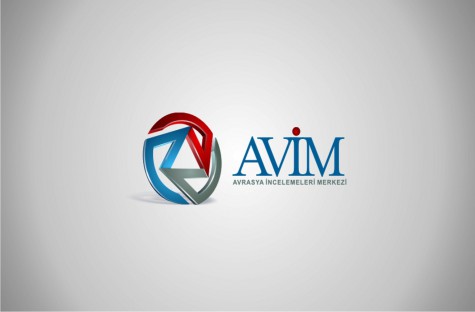 EUROPEAN PARLIAMENT RESOLUTION OF 15 APRIL 2015 ON THE CENTENARY OF THE ARMENIAN GENOCIDE
EUROPEAN PARLIAMENT RESOLUTION OF 15 APRIL 2015 ON THE CENTENARY OF THE ARMENIAN GENOCIDE
Turgut Kerem TUNCEL 21.04.2015 -
 BECOMING THE PART OF THE PROBLEM: THE FAULTY POLICIES OF THE WEST IN EURASIA AND THE SOUTH CAUCASUS
BECOMING THE PART OF THE PROBLEM: THE FAULTY POLICIES OF THE WEST IN EURASIA AND THE SOUTH CAUCASUS
Turgut Kerem TUNCEL 11.08.2015 -
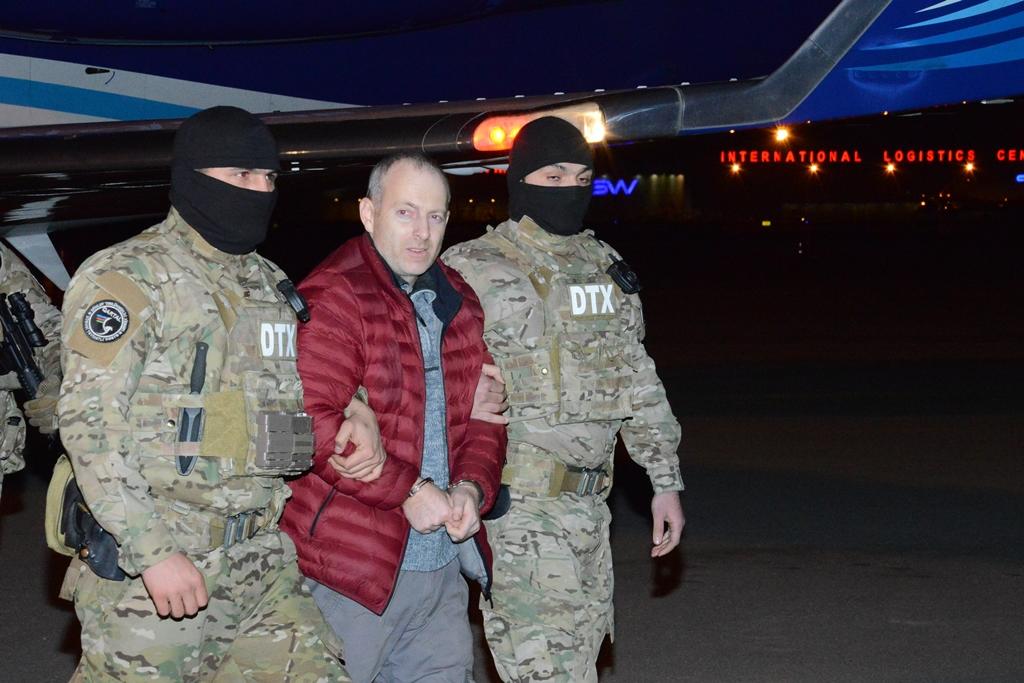 ALEXANDER LAPSHIN’S EXTRADITION TO AZERBAIJAN: A NEW EPISODE IN KARABAKH DISPUTE
ALEXANDER LAPSHIN’S EXTRADITION TO AZERBAIJAN: A NEW EPISODE IN KARABAKH DISPUTE
Turgut Kerem TUNCEL 21.02.2017 -
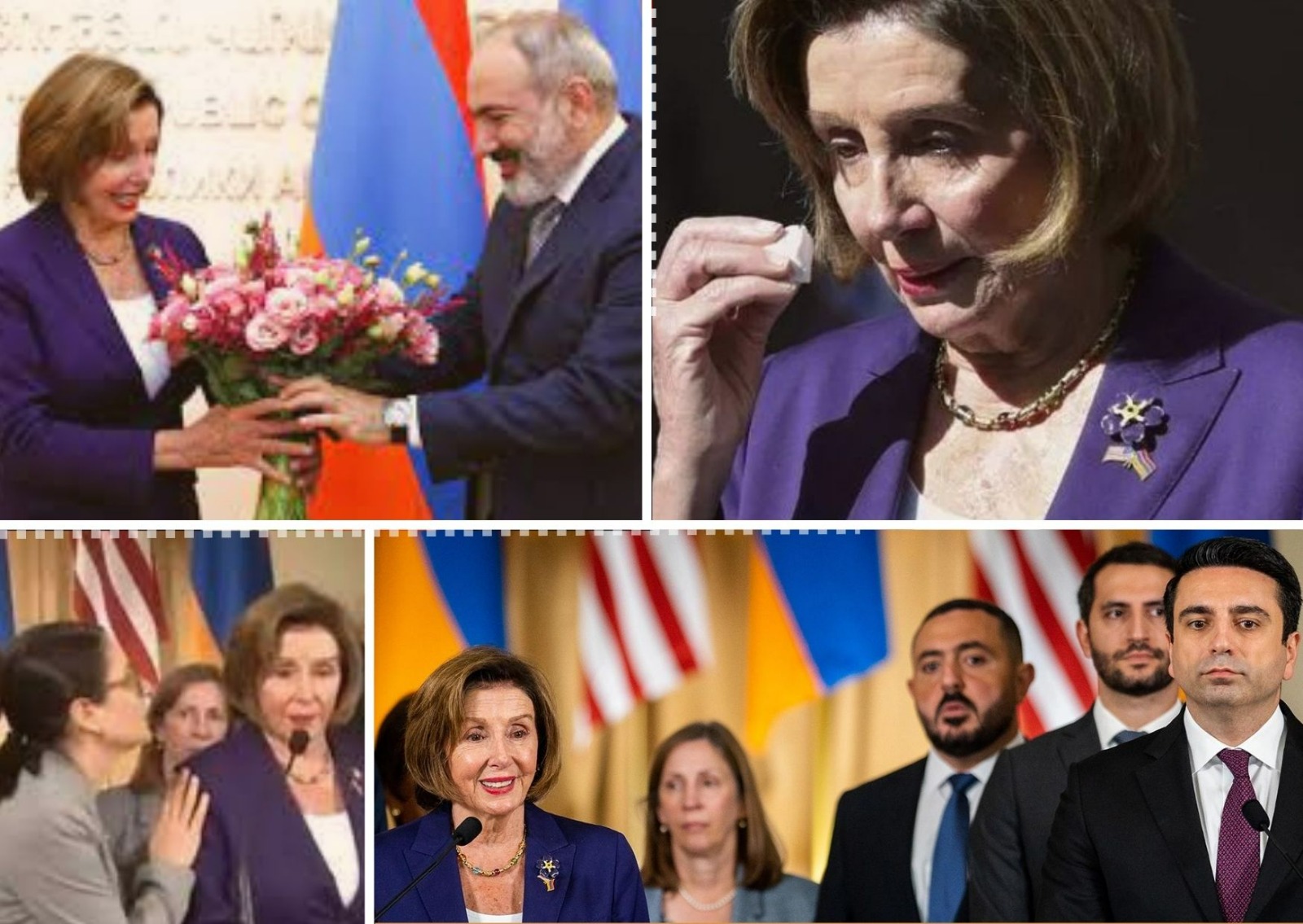 AN INQUIRY INTO NANCY PELOSI’S VISIT TO ARMENIA
AN INQUIRY INTO NANCY PELOSI’S VISIT TO ARMENIA
Turgut Kerem TUNCEL 23.09.2022 -
 2 APRIL 2017 PARLIAMENTARY ELECTIONS IN ARMENIA
2 APRIL 2017 PARLIAMENTARY ELECTIONS IN ARMENIA
Turgut Kerem TUNCEL 14.04.2017
-
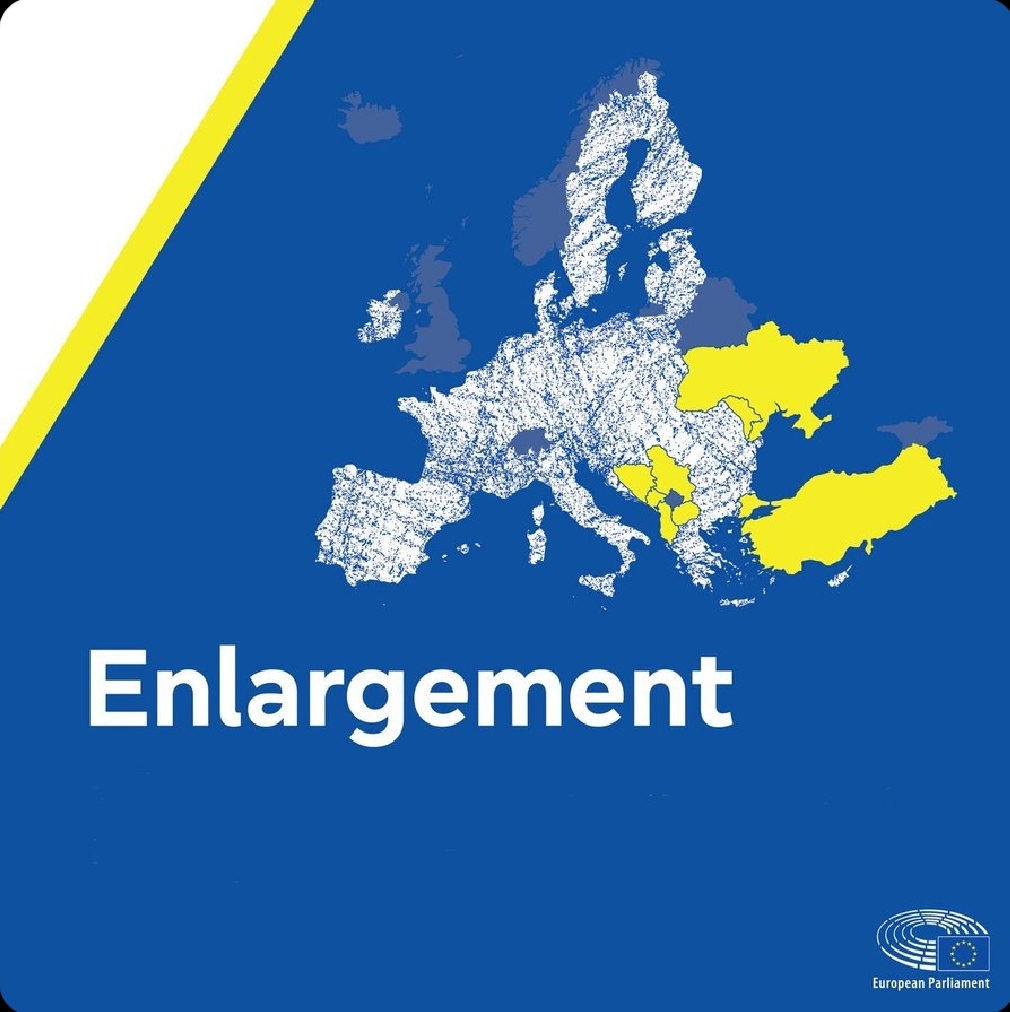 THE EU'S ENLARGEMENT PARADOX: POLITICS OVER PRINCIPLES?
THE EU'S ENLARGEMENT PARADOX: POLITICS OVER PRINCIPLES?
Teoman Ertuğrul TULUN 25.01.2024 -
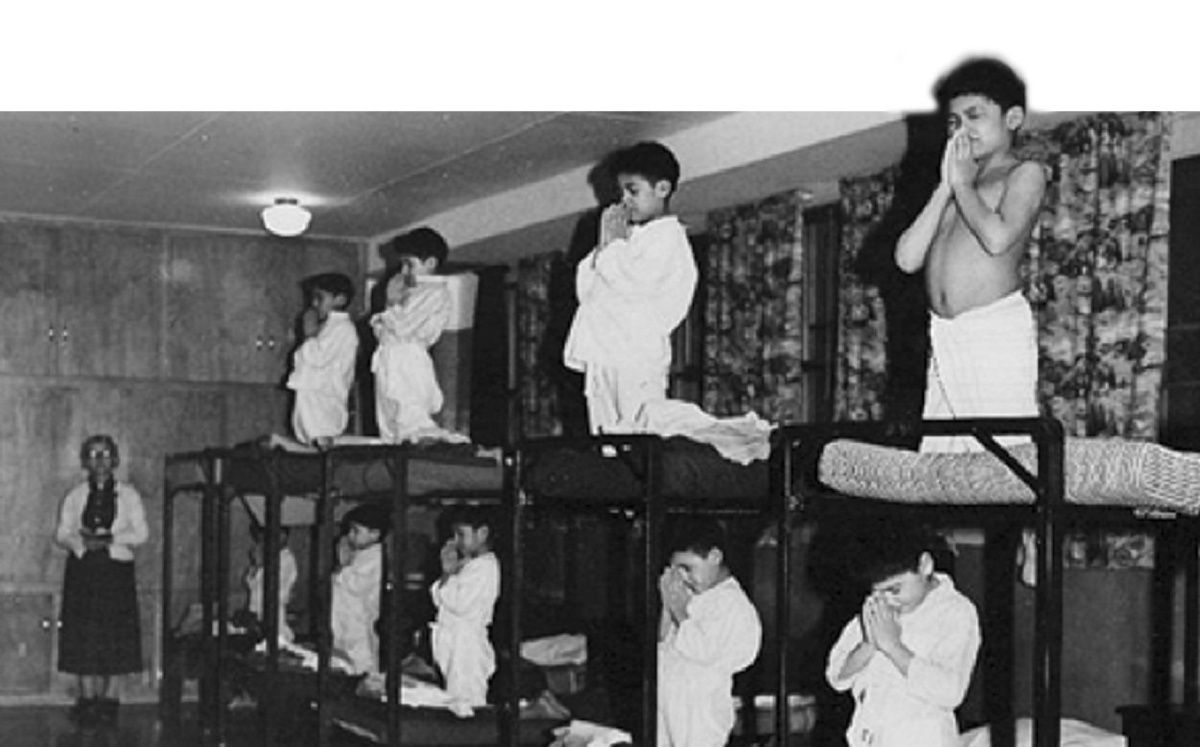 CANADA, THE ROMAN CATHOLIC CHURCH, AND THE SINS OF THE COLONIAL PAST
CANADA, THE ROMAN CATHOLIC CHURCH, AND THE SINS OF THE COLONIAL PAST
Teoman Ertuğrul TULUN-Mehmet Oğuzhan TULUN 05.07.2021 -
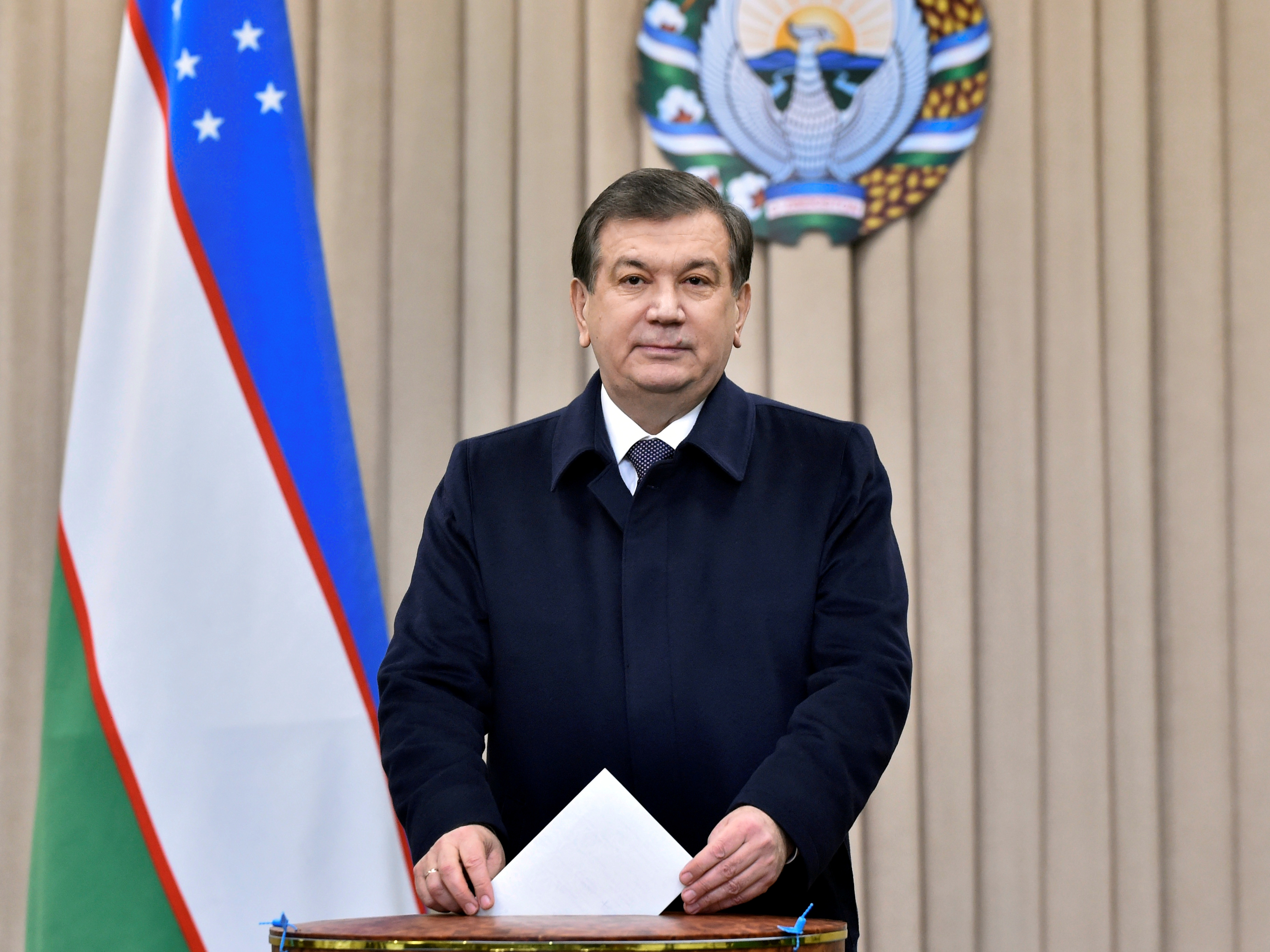 UZBEKISTAN’S REGIONAL POLICIES UNDER NEW PRESIDENT: A NEW ERA?
UZBEKISTAN’S REGIONAL POLICIES UNDER NEW PRESIDENT: A NEW ERA?
Özge Nur ÖĞÜTCÜ 18.08.2017 -
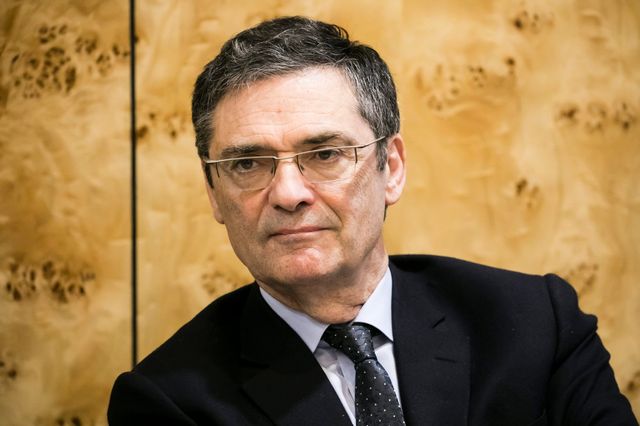 PATRICK DEVEDJIAN: A NEO-FASCIST WHO WAS A LIFE-LONG SUPPORTER OF TERRORISM
PATRICK DEVEDJIAN: A NEO-FASCIST WHO WAS A LIFE-LONG SUPPORTER OF TERRORISM
Maxime GAUIN 02.04.2020 -
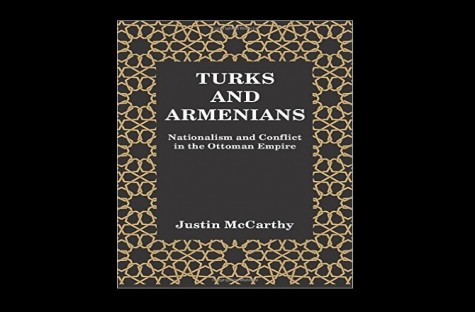 CHAPTER BY CHAPTER SYNOPSIS AND REVIEW OF TURKS AND ARMENIANS: NATIONALISM AND CONFLICT IN THE OTTOMAN EMPIRE BY JUSTIN MCCARTHY - 4
CHAPTER BY CHAPTER SYNOPSIS AND REVIEW OF TURKS AND ARMENIANS: NATIONALISM AND CONFLICT IN THE OTTOMAN EMPIRE BY JUSTIN MCCARTHY - 4
Ali Murat TAŞKENT 22.10.2015
-
25.01.2016
THE ARMENIAN QUESTION - BASIC KNOWLEDGE AND DOCUMENTATION -
12.06.2024
THE TRUTH WILL OUT -
27.03.2023
RADİKAL ERMENİ UNSURLARCA GERÇEKLEŞTİRİLEN MEZALİMLER VE VANDALİZM -
17.03.2023
PATRIOTISM PERVERTED -
23.02.2023
MEN ARE LIKE THAT -
03.02.2023
BAKÜ-TİFLİS-CEYHAN BORU HATTININ YAŞANAN TARİHİ -
16.12.2022
INTERNATIONAL SCHOLARS ON THE EVENTS OF 1915 -
07.12.2022
FAKE PHOTOS AND THE ARMENIAN PROPAGANDA -
07.12.2022
ERMENİ PROPAGANDASI VE SAHTE RESİMLER -
01.01.2022
A Letter From Japan - Strategically Mum: The Silence of the Armenians -
01.01.2022
Japonya'dan Bir Mektup - Stratejik Suskunluk: Ermenilerin Sessizliği -
03.06.2020
Anastas Mikoyan: Confessions of an Armenian Bolshevik -
08.04.2020
Sovyet Sonrası Ukrayna’da Devlet, Toplum ve Siyaset - Değişen Dinamikler, Dönüşen Kimlikler -
12.06.2018
Ermeni Sorunuyla İlgili İngiliz Belgeleri (1912-1923) - British Documents on Armenian Question (1912-1923) -
02.12.2016
Turkish-Russian Academics: A Historical Study on the Caucasus -
01.07.2016
Gürcistan'daki Müslüman Topluluklar: Azınlık Hakları, Kimlik, Siyaset -
10.03.2016
Armenian Diaspora: Diaspora, State and the Imagination of the Republic of Armenia -
24.01.2016
ERMENİ SORUNU - TEMEL BİLGİ VE BELGELER (2. BASKI)
-
AVİM Conference Hall 24.01.2023
CONFERENCE TITLED “HUNGARY’S PERSPECTIVES ON THE TURKIC WORLD"









